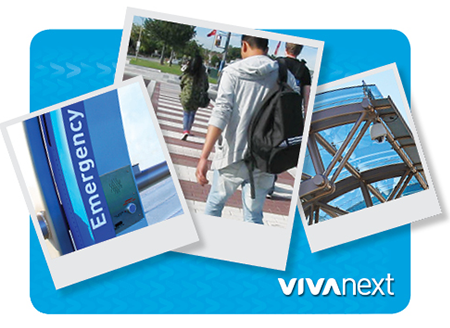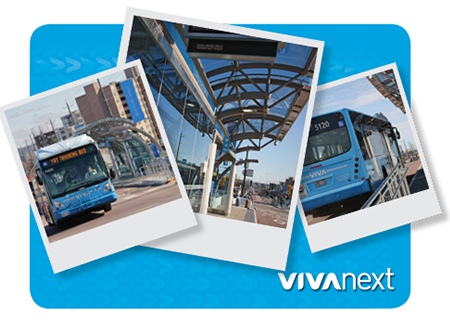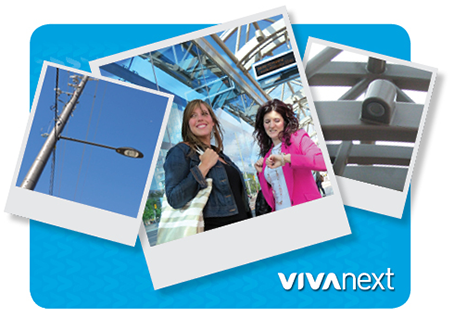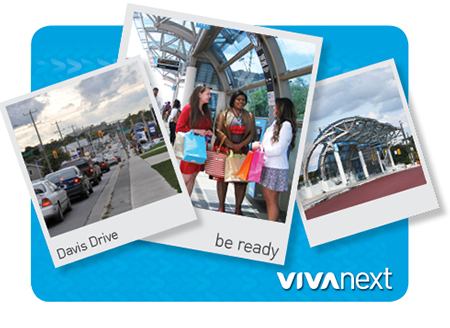We’ve taken every possible step to make the vivastations on the new Davis Drive rapidway feel like a safe haven, especially considering the stations are located in the middle of a busy roadway.
While you wait for transit, you can take comfort in the fact that you are well protected from the elements and adjacent traffic, and able to get help easily if you need it.
safety starts with design
The new vivastations include a variety of safety features, and are designed with transparency and good lighting in mind – two key principles of CPTED [Crime Prevention Through Environmental Design]. Stations have a concrete barrier wall along the traffic side, and a steel and glass guardrail beyond the glass canopy. The glass is impact-resistant with an interior film that prevents shattering [similar to a windshield] and provides UV sun protection.
call buttons are crucial
In the case of an emergency, an Emergency Call Button is clearly marked inside the glass enclosure. Its speaker provides immediate two-way contact between the caller and YRT operators. Call audio is recorded and time-stamped, as is the video automatically captured by the closest of three security cameras when the button is pushed. When the button is pushed, blue strobe lights on the Variable Message Sign [VMS] and the button are triggered to indicate to passing emergency services that assistance is needed, and transit staff will dispatch emergency services if needed.
safety is personal too
As much as we’ve designed vivastations to be safe, safety is also in the hands of those driving and walking on Davis Drive. While many drivers are now accustomed to making U-turns, but for others, it’s new. Drivers and pedestrians should both stay alert, and keep an eye out for one another, especially in intersections – and especially in fall and winter when daylight is in short supply.
two-stage crossings have rest spots
Because intersections were widened, a two-stage crossing at crosswalks is recommended for pedestrians. There are waiting areas in the middle of the crosswalk, where pedestrians can press the “walk” button and wait for the next signal.
Safety features are one of those things that are only top of mind when they’re needed. We hope that you always keep them in mind. That way you can rest assured that your rapidway trip will be a safe haven.





